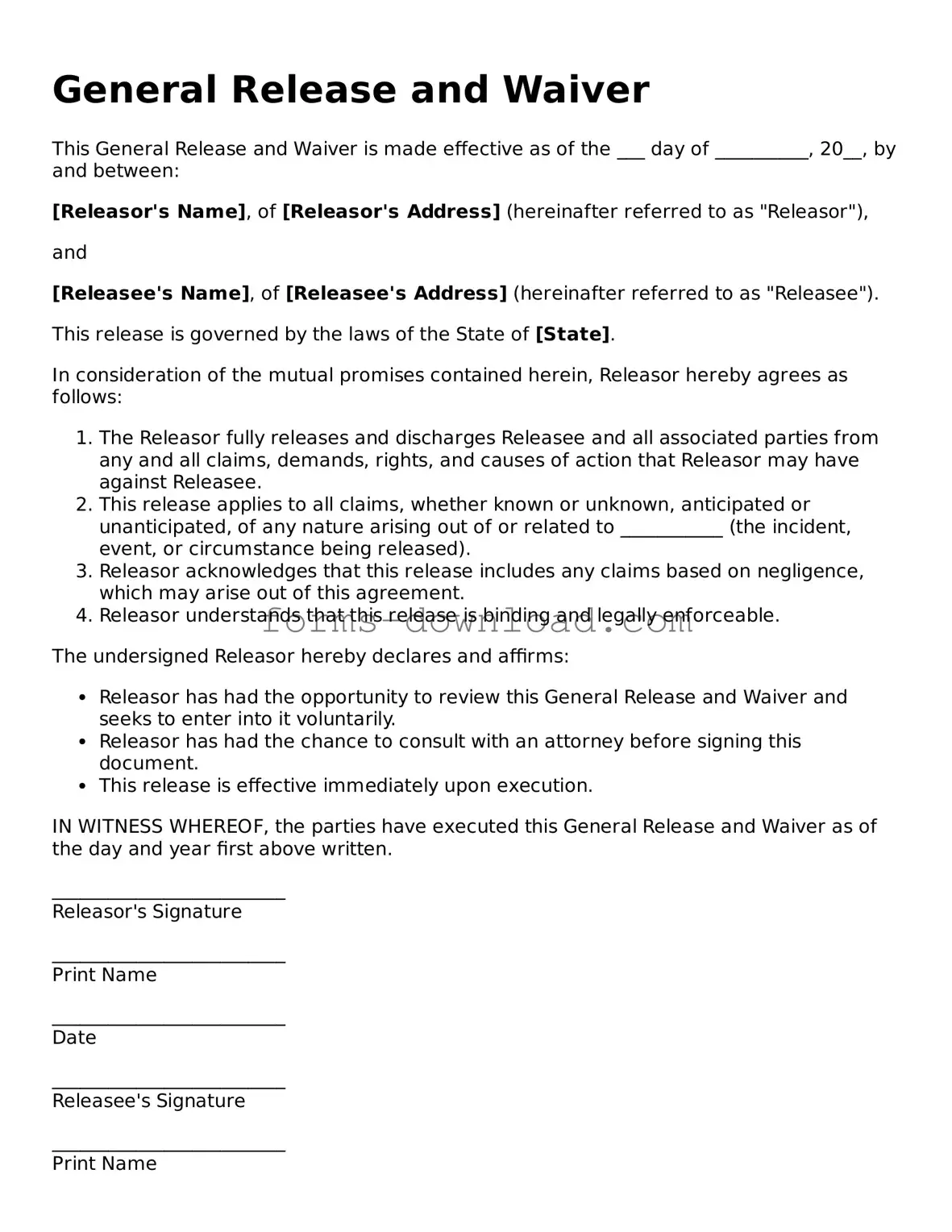General Release and Waiver
This General Release and Waiver is made effective as of the ___ day of __________, 20__, by and between:
[Releasor's Name], of [Releasor's Address] (hereinafter referred to as "Releasor"),
and
[Releasee's Name], of [Releasee's Address] (hereinafter referred to as "Releasee").
This release is governed by the laws of the State of [State].
In consideration of the mutual promises contained herein, Releasor hereby agrees as follows:
- The Releasor fully releases and discharges Releasee and all associated parties from any and all claims, demands, rights, and causes of action that Releasor may have against Releasee.
- This release applies to all claims, whether known or unknown, anticipated or unanticipated, of any nature arising out of or related to ___________ (the incident, event, or circumstance being released).
- Releasor acknowledges that this release includes any claims based on negligence, which may arise out of this agreement.
- Releasor understands that this release is binding and legally enforceable.
The undersigned Releasor hereby declares and affirms:
- Releasor has had the opportunity to review this General Release and Waiver and seeks to enter into it voluntarily.
- Releasor has had the chance to consult with an attorney before signing this document.
- This release is effective immediately upon execution.
IN WITNESS WHEREOF, the parties have executed this General Release and Waiver as of the day and year first above written.
_________________________
Releasor's Signature
_________________________
Print Name
_________________________
Date
_________________________
Releasee's Signature
_________________________
Print Name
_________________________
Date
